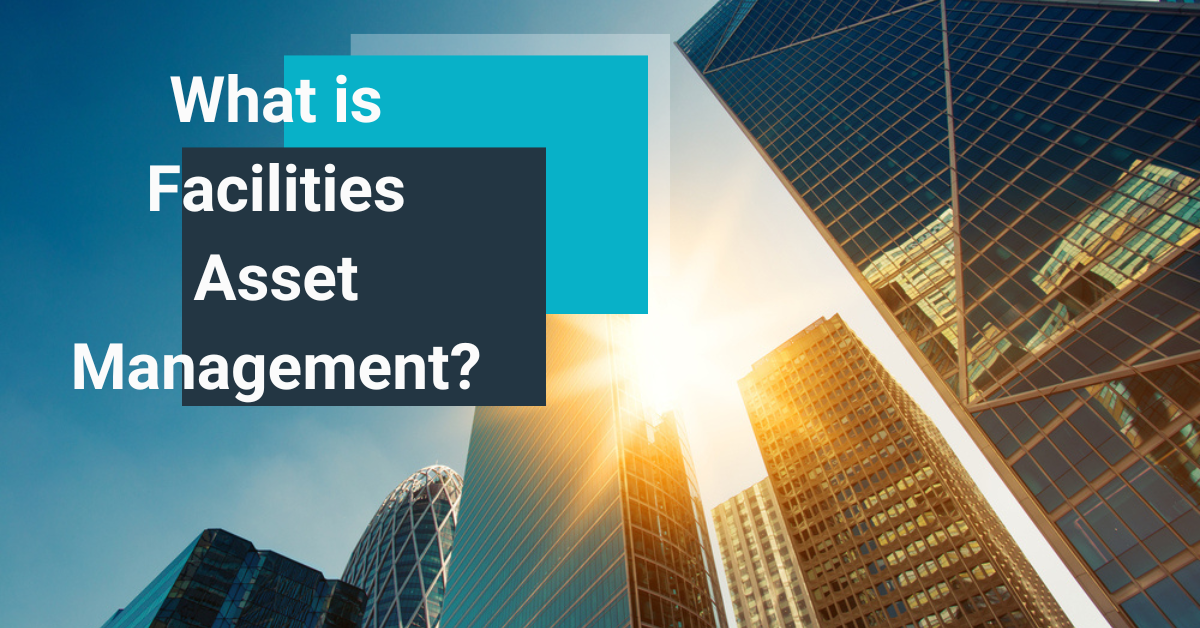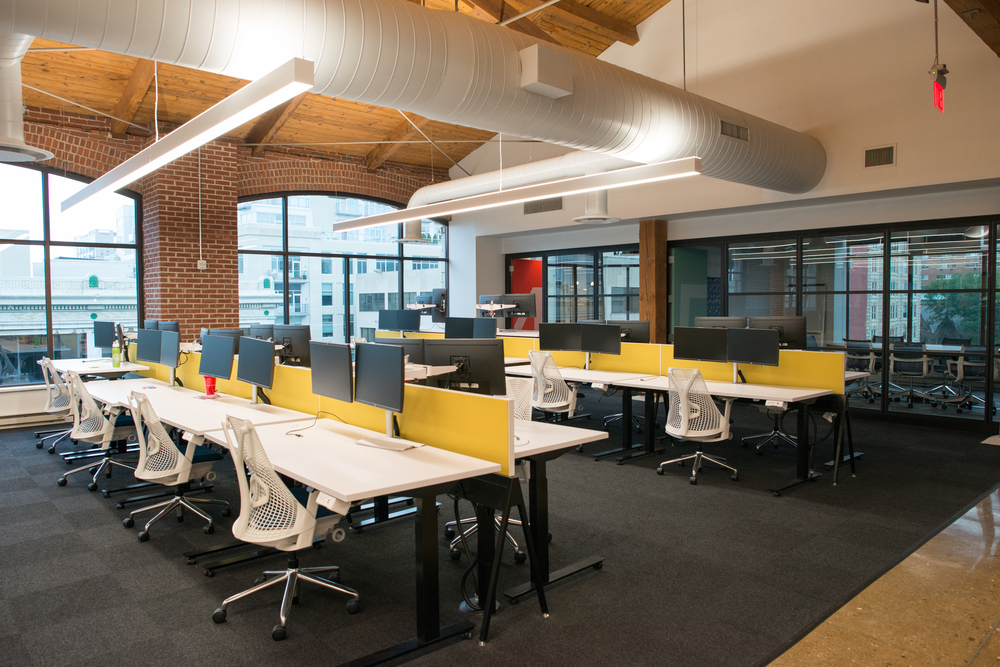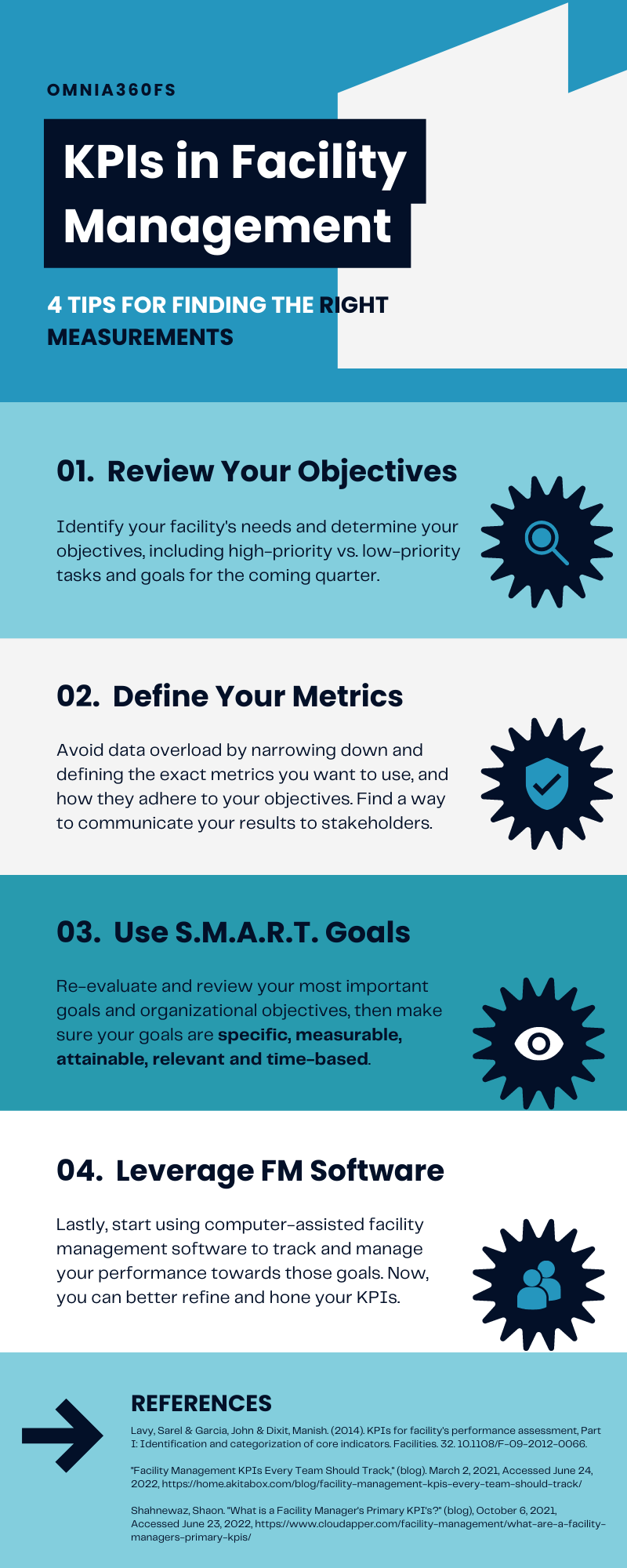Enhancing Efficiency: Industrial Plants & Integrated Facility Solutions

In the rapidly evolving industrial landscape, the success of manufacturing plants heavily depends on maintaining operational efficiency.
To achieve this, many industrial facilities are turning to integrated facility solutions, a comprehensive approach that streamlines maintenance, repairs, and operations under one system.
Omnia360 in Cincinnati, OH, explores the concept of integrated facility solutions and how they effectively alleviate the bottlenecks found with hiring individual contractors.
Understanding Integrated Facility Solutions
Commercial maintenance vendors offer a comprehensive approach to managing and maintaining industrial plants by consolidating various functions and services.
Related Post: What are ‘Hard’ and ‘Soft’ Facility Management Services?
These solutions combine diverse tasks such as maintenance services like landscaping and pest control, safety inspections, energy management, and more, all handled by a single, experienced provider.
By integrating these functions, industrial plants can streamline processes, improve productivity, and reduce downtime, ensuring uninterrupted operations.
Alleviating The Bottlenecks
Facility management works to relieve congestion and keep your business running smoothly. There are several benefits for industrial plants to opt for this overarching approach, including:
- A Single Point of Contact: Hiring multiple individual contractors can get confusing. Having a single “go-to” contact simplifies communication and accountability, reducing the chances of misunderstandings or delays.
- Enhanced Efficiency: Coordinating contractors can be a logistical nightmare. Remove this complexity by synchronizing tasks and optimizing your business’s workflow. This streamlined approach improves overall efficiency, allowing you to meet production targets quickly.
- Comprehensive Expertise: Industrial plants have a range of equipment and systems requiring specialized knowledge for maintenance and repairs. Relying on individual contractors often means limited expertise in specific areas. Integrated facility solutions provide access to a team of professionals with varied skill sets, covering everything from mechanical and electrical maintenance to safety compliance. This expertise ensures all aspects of the plant’s infrastructure are handled by seasoned professionals, minimizing the risk of costly errors and injury.
- Save Money: Hiring individual contractors might initially seem cost-effective, but hidden expenses add up over time. These include coordinating services, sourcing materials, and managing multiple contracts. Integrated facility solutions offer a transparent and predictable cost structure, making it easier for plants to budget expenses accurately. The long-term benefits of improved efficiency and reduced downtime lead to significant cost savings in the grand scheme.
- Preventative Maintenance: Preventive maintenance is critical in successful industrial plant management. Integrated facility solutions take this approach further by implementing predictive maintenance strategies.
Related Post: 5 Preventative Maintenance Tips for Commercial Buildings
Potential issues can be detected and addressed before they escalate into major problems. As a result, the company can avoid costly breakdowns and unnecessary downtime.
6. Compliance and Safety: Industrial plants must adhere to strict regulatory requirements, especially concerning safety and environmental standards.
Related Post: How Do Facility Management Companies Ensure Building Safety?
Hiring individual contractors may lead to inconsistencies in compliance, exposing the plant to legal and reputational risks. Commercial maintenance vendors ensure that safety protocols are consistently applied, keeping the plant in compliance and safeguarding the well-being of its workforce.
Take Advantage of 24/7 Service
Using integrated facility solutions has become an essential strategy for industrial plants seeking to optimize their operations, enhance efficiency, and reduce bottlenecks associated with hiring individual contractors.
Omnia360 Facility Solutions offers 24/7 maintenance for your plant in the larger Cincinnati area. Call us today for a free consultation: 833.360.6642.
Fire Protection for Your Commercial Building

Is your business prepared for a fire?
We’ve all heard how devastating a fire can be to people, homes, and businesses. In 2021, the U.S. Fire Administration estimated 116,500 fires in non-residential buildings nationwide. These fires were estimated to cause 115 deaths, 1,025 injuries, and over $3,697,200,000 in damages.
To prevent significant loss, every business should have fire protection that follows federal, state, and local guidelines.
We’ll discuss what commercial fire guidelines should be followed and how facility management can work to keep your company and employees safe.
What Fire Protection Guidelines Should I Follow?
Along with localized fire codes, the Occupational Safety and Health Administration, better known as OSHA, provides several standards for protecting employees and businesses.
Some vital protection guidelines for commercial fire prevention include exit strategies, working safety equipment, and hazardous material management.
Exit strategies include evacuation planning and determining set routes for employees to follow in case of emergency.
Each company should have an emergency exit plan that should be accessible to all employees. Training on what to do during a fire should take place, too. Knowing where to go, who needs help, and what policies to follow keeps staff members safe.
Depending on the size of your building and the type of industry you’re involved in, multiple emergency exits should also be a part of your company’s exit strategy.
Maintaining fire prevention and detection tools is another essential step in protecting your business.
This includes keeping emergency lighting, sprinkler systems, ventilation systems, smoke detectors, and alarms in working order.
OSHA also outlines particular guidelines for specific, and often more high-risk, industries like welding, logging, and electric power generation.
Regular inspections should occur in these industries with hazardous materials to ensure safety criteria are met.
How Can Facility Management Keep My Company Protected?
When it comes to inspection and management of commercial fire prevention, a facility management expert can be a massive asset to your company.
Asking an internal employee or doing fire safety inspections yourself leaves room for critical errors. Meeting fire standards should not be taken lightly, as the consequences could result in fines from a fire marshall or worse – injury to yourself or staff.
Related Post: How Do Facility Management Companies Ensure Building Safety
Preventative management from Omnia360 includes interior and exterior inspections of protective equipment like battery power exit signs and sprinklers, and can more easily keep your business compliant.
Our team of facility experts can ensure you meet all fire safety guidelines.
When Do I Need Facility Management Services?
If you’re overwhelmed with keeping your business up to code or don’t have an expert on fire codes and regulations, it might be time to consider facility management services.
Related Post: 5 Signs Your Business Needs Facility Management Services
Save yourself and your staff from being overwhelmed by partnering with Omnia360. We offer comprehensive, integrated facility management services. For more information or a free price quote, contact us today at (833) 360-6642.
What is Facilities Asset Management?

Asset management is a fundamental part of getting results as a facilities management company. It falls under the broad service of facilities maintenance, which involves the day-to-day tasks of running a building or workplace.
In today’s post, Omnia360, a leading facility management company in Cincinnati, Ohio, breaks down what facilities asset management is and why your business needs it!
What is facilities asset management?
Also referred to as lifecycle planning, facilities asset management serves to create a framework for how to operate, maintain, renew, and retire high-value assets at a company.
These assets can include a building’s HVAC unit, company vehicles, and even proprietary software licenses.
Personnel-related assets: items that are related to employees’ personal use (vehicles, mobile devices, uniforms, protective gear, etc.).
IT-related assets: software and computer equipment utilized by your facility (copiers, printers, software licenses, data infrastructure, etc.).
Facility-related assets: anything in your building’s infrastructure (HVAC, electrical system, break room appliances, plumbing, and more).
A facility’s assets are defined in several ways:
- Cost in relation to budget — anything over X thousand dollars is an asset.
- Life cycle investments — any substantial investment over time.
- Life cycle investments + leased assets, 12-month liabilities, FASB-reported capital investments, and depreciating assets.
Three observable traits in a facility’s assets
High value: they’re a considerable monetary investment.
Depreciating: their value decreases from the initial investment cost.
Essential: they’re required for your facility to perform at full capacity.
How FM Companies Track Facility Assets
Asset management lives and dies by the facility management software a company uses.
The software is what helps to establish a recurring preventative maintenance schedule, accurately allocate the budget of your maintenance plan, and track an asset’s performance, improvements, depreciation, and more.
Managing a facility’s assets starts with one thing…
-
Facility Data Collection
Collecting the right performance data on your assets, as well as making notes on the asset name, category, model number, etc., is part of establishing an accurate, long-term asset management plan.
-
Maintaining the Asset
Maintenance and asset management work closely with one another to ensure your facility is being maintained in a cost-effective manner. Working with an inventory list that establishes deferred maintenance and scheduled replacement of all assets.
-
Strategic Facility Planning
After collecting data and establishing a maintenance list for your asset inventory, a strategic plan is established that prioritizes particular assets over others. This is determined by a building’s goals, their budget, and information gleaned from the data.
Great FM companies are adaptable and can adjust the strategy based on a building’s evolving needs.
Core benefits of facilities asset management
Life cycle planning allows for facility managers to forecast operational costs, plan for maintenance and system upgrades, and minimize the total cost of ownership at the asset level.
Asset management also applies to companies that license software. It gives one the ability to plan the upgrade process to the latest software update in the future and determine if demand for licenses has grown or shrunk within the organization.
FM Industry Terminology: What You Need to Know
- Capital improvement: dollar cost to preserve a building function
- Capitalized asset: an asset that has reached a break-even point from investment
- Depreciation: how much the value of an asset has decreased since the initial investment
- End-of-life date: the planned date of eliminating an asset based on its operable life
- Asset class: groups of similar assets tracked for purposes of accounting
- Ghost asset: an asset on the company’s books but no longer in use
- Life cycle management: a comprehensive plan for an asset, from acquisition to use and disposal
- Planned obsolescence: getting rid of an asset early, before it’s no longer usable
- Total cost of ownership: total cost to own, maintain, and use an asset
The Value of Facilities Management & Asset Maintenance
Facilities work to serve the unique needs of their clients, depending on the industry vertical they’re in, as well as their facility’s usable assets.
FM companies work to monitor, manage, and maintain all manner of building assets, from copy machines to commercial HVAC systems, which ultimately works to save your business money in the long run in a few critical ways:
- No breaks in production from blackouts or outages (due to a well-maintained facility)
- Better consumer appeal from landscaping and parking lot cleaning (impressing customers with a great-looking external facility)
- All-in-one work order payments (no more juggling contracts between various trades services)
Get 24/7 Facility Maintenance from a Premier FM Company in Cincinnati, OH.
Our cross-trained trades specialist can deliver exceptional results for your facility. We’ll give you a custom-tailored maintenance plan based on your goals and budget. Get a free assessment from one of our representatives today at: 833.360.6642
Top 6 KPIs in Facility Management

In the world of facilities management, the best ways to measure performance are up to debate. However, there are some go-to key performance indicators (KPIs) that every facility manager should track to ensure progress is optimal.
Omnia360, a comprehensive facility management company in Cincinnati, Ohio explains the six best KPIs to consider in 2022.
Why are KPIs Important for Facility Managers?
KPIs let you and your team know how to best manage a facility, track progress and make adjustments along the way. They inform smart, strategic business decisions across an organization.
What’s the Difference between a KPI and a Metric?
A key performance indicator is a measurement that gives insight into an area of your organization’s performance, whereas a metric is a numerical unit of measurement that informs the KPI. All KPIs are metrics. Not all metrics are KPIs.
How Should KPIs Be Established?
Remember to use the S.M.A.R.T. method:
Specific,
Measurable,
Attainable,
Relevant,
Time-Bound.
Best Data Sources for Measuring KPIs
- FM Information System
- Finance System
- Staff
- Internal Surveys
- Utility Companies
- Service Companies
- Vendors
- Building Automation System
- Energy Management System
- Other Internal Systems
6 KPIs That You Can Start Measuring Today
1. Reactive Maintenance vs. Preventative Maintenance
If you’re constantly putting out fires and spinning your wheels with emergency maintenance repairs, you’re behind the ball on profitability and productivity. Your ratio should be 80:20 in favor of preventative, planned maintenance. This way, you’re on top of your facility’s management goals.
2. Work Order Completion Times
What’s the turnaround time for a work order to get completed? If you notice a tech taking a bit longer than expected, perhaps it’s a good time for some extra training.
3. Workforce Productivity
Overall productivity informs how well your facility is being managed. Low productivity could be due to low morale, uncomfortable or unorganized working conditions, or internal processes.
These are something to watch out for and consider hiring a third-party consultant like Omnia to streamline your operation’s model.
4. Employee Satisfaction Surveys
Dissatisfied employees usually lead to higher turnover rates, which costs the company time and money to staff, onboard, and train new hires, as well as cross-training or adjusting work roles to pick up the slack and maintain profitability.
In other words, you can’t afford to ignore this KPI. To properly gauge employee satisfaction, communicate with staff members personally or send out anonymous surveys to be filled out and look at the numbers.
5. Backlog of Deferred Work
Deferring maintenance can be a cost-effective, strategic decision by FM managers. However, it’s a double-edged sword and it can backfire. One of the drawbacks is a laundry list of backlogged work orders.
These are costly to your productivity and efficiency as a company. It’s also a great KPI to look out for. Managers can measure backlogs in hours and convert the data to backlog weeks. Your goal should be a backlog of four to six weeks.
6. Work Schedule Compliance
At the end of the day, your ability to schedule and complete work for customers is a core indicator of well-optimized facility management services. This KPI allows you to determine how technicians, tools, software, and hard or soft resources work together to deliver a great product to your customers.
Being able to promise your customers that work gets delivered on time, without hiccups, is part of long-term success in FM.
Contact Omnia360fs for Facility Management Services
We value high-quality, transparent, and collaborative work that emphasizes operational success. We use the latest technologies and data metrics to analyze and report your facility’s operational performance. Partner with us today by calling 833.360.6642.
Is Facility Management Going Virtual? (VR, AR and AI)

Facility management companies are going virtual, and for good reason. The adoption of technology across sectors like FM has changed how we work and streamlined various internal work processes. It’s in no small part thanks to the adoption of AI-driven technologies, alongside virtual reality and augmented reality.
In today’s blog, Omnia360 explains why facility management is going virtual and what the benefits are.
What Does “Virtual” Mean in this Case?
Going “virtual” involves the adoption of technologies that allow FM companies to perform work tasks and internal processes without being in the same location in person. VR and AR technologies fall under the umbrella of “going virtual.”
Let’s define some terms:
- Virtual reality (VR) is a computer-generated simulation of a 3D environment.
- Augmented reality (AR) enhances the physical world through sensory media technologies.
Both AR & VR are key components to how the FM industry is evolving.
So what’s driving the push for facility management companies to be virtual?
Rapid advances in AI technology, increased globalization, social invention, disruptive change, and market competition are drivers for why many facility management companies are “going virtual.”
Three Ways Virtual Technologies are Enhancing Facility Solutions
1. Monitor “Unseen” Equipment
Using augmented reality technologies in a facility is like having X-Ray vision. Those hard-to-reach pipes, wiring or tunnels hidden within a building are far easy to spot, monitor and assess. Without AR enhancements, you’d likely have to take out the drywall or perform some other intensive task to access these areas. The sensors that collect data that can be exported to an FM software for review. This helps FM teams complete more accurate repair and maintenance work.
2. Create Smart 3D Renderings of Facilities
VR technologies allow one to be fully immersed in a building’s layout, seeing every facet of a facility, and making it easier to comprehensively plan, build and maintain a facility. Normally, when this is done in person, it’s time intensive and involves plenty of trial and error. VR devices also allow for multiple users to view a scalable 3D rendering of a facility simultaneously, thereby making collaboration easier and presenting ideas to stakeholders more engaging (you can show, instead of tell).
3. Remote Troubleshooting
Using VR to create 3D models for remote, virtual inspections require fewer resources and help managers determine better, strategic solutions for facilities. Using VR to troubleshoot equipment problems, schedule accurate work orders and direct contractors remotely saves enormous sums of time and makes FM managers more competent at their role.
Going Virtual Means Greater Labor Efficiency
Virtual technologies are forcing companies in facility management and other sectors to adapt their business practices. The advent of remote work, for instance, or “work from anywhere” jobs lowers the overall cost of maintaining a brick and mortar facility; and, at the very least, reduces various costs like a building’s monthly energy bill usage and cleaning services.
There are plenty of benefits to telework and adopting a virtual work method:
- Improving team productivity
- Optimizing operations cost-efficiency
- Leveraging decentralized labor resources
Virtual Technologies Streamline FM Work Processes
Omnia360 is among the many companies to incorporate virtual solutions to bolster internal work processes and workload efficiency.
This is specifically the case when it comes to assessing facility operations, organizing a maintenance task pipeline, and collaborating with clients on project management workflows.
- Monitoring and Reporting: Technology allows for seamless updates on work order statuses, where an FM manager can be at work, receive an auto-generated work order that can be easily viewed by an on-site service technician.
- Data Collection and Analytics: The integration of cloud networking and mobile infrastructure allows for FM managers to collect data for operations, equipment and work orders with a mobile phone app, making for faster decisions and more control over maintenance plans.
- Streamlined Business Operations: Wifi-based mobile integration of the workplace allows for expedited work order processes, improved labor efficiency, and cost savings, where requested work orders can be sent directly to a technician through an app.
The instant connectivity over digital devices through apps allows for minuscule processes of information transfer between parties regarding work orders, repairs, and projects to be far quicker and easier than ever before.
Mobile Vendors and Improved Turnaround Time
With the help of virtual meetings and improved data connectivity on the Cloud, mobile vendors can better share information about a project or work order before, during, and after it’s completed.
With more information through data, there’s increased accuracy and streamlined efficiency in completing on-site repairs and maintenance checks.
Digital Workload Management (Integrating Asset Tracking)
AI technologies are becoming an integral part of running a facility management company. So much of the manual work of filing and organizing work orders, detailing project budgets and so much more is getting outsourced to a computer.
This means companies can be more agile and direct resources towards other productive pursuits.
Here are some of the benefits of having asset-tracking technologies and digitized resources:
- Easy management and transfer of work orders or project specs
- Tracking complaints or internal changes to update business goals
- Reporting and monitoring shifts in a business operations capacity
- Accurate data collection and analytics to support smart business decisions
Related Post: Top 5 Facility Management Solutions Software for 2022
Adopting Virtual Technologies is a Net Benefit to Any Company
This streamlined efficiency not only benefits FM companies, but clients as well.
Businesses that need their landscaping spruced up, commercial HVAC systems repaired, or broken plumbing fixed can expedite the process of getting repairs completed on time and under budget with integrated virtual technologies.
Virtual tech improves transparency and allows for building owners and property managers to make informed decisions with their operations budget.
At Omnia360, we pride ourselves on having well-organized internal processes and procedures, including thorough checks and balances on our repairs and maintenance work. Remote diagnostic technologies make inspecting, assessing and reporting on a building’s specific work projects far more streamlined and accessible to stakeholders.
Virtual mobile technologies enhance interdepartmental communication, giving faster data transfer between parties and faster decisions.
At Omnia360, we make sure that our on-site vendor management is done in a timely, accurate, and efficient manner, so you can focus on doing what you do best: running your company.
Hire a Cutting-Edge Facility Management Company Today
The team at Omnia360 utilizes the latest technologies and management practices in the industry. We have all of the tools to ensure your building stays well-maintained and cost-efficient throughout the whole year. Contact us today for a free assessment and more information about our service contracts.
Top 5 Facility Management Trends in 2022

Facilities management is a rapidly growing and evolving industry. With many structural changes on the horizon, this field can expect to see major challenges, AI-driven disruptions, and improvements in the coming year.
Table of Contents:
Major Changes in the Facility Management Industry
The goal of every FM company is to help businesses with cost savings, internal operations management, compliance, and risk management. Despite FM services being a great investment, there are numerous changes affecting the industry.
According to Mckinsey & Company, a leading organizational consulting firm, there are several factors contributing to the evolution of facility management service companies over time, especially most recently.
Challenging economic conditions, fears of recession, and tighter budgets due to slowed economic growth can mean investing less in facility management services.
Deciding to postpone FM isn’t without long-term costs. Deteriorating buildings, poor-functioning internal operations, and inefficient energy usage all lead to potentially larger costs down the line.
Conditions like these provide the groundwork for emerging trends of 2022. Here are the top 5 trends for FM companies in 2022.
1. Leveraging Digital Technologies

AI is entering the mix — among several other emergent technologies, including the blockchain and various cloud-based resources for digital file-sharing between FM companies and their constituents.
Comprehensive FM companies must be up to date with emerging technologies, embracing them and integrating them into their functional workflow. This is exactly what our staff at Omnia360 strives to do.
The days of using T-Card systems and spreadsheets to manage operations are gone — long gone.
Using a robust CAFM system streamlines and organizes tasks, leading to benefits like:
- More efficient space utilization
- Cost savings
- Reduction in asset inventories and greater organization
- Fast and accurate reporting methods that can be shared with stakeholders
Related Post: Top 5 Facility Management Software for 2022
Utilizing AI-based facilities management systems can streamline internal processes like never before: automatically generating reports, maintenance schedules, replacement requests, and more without human involvement. More and more softwares offer secure third-party integrations add a new functionality without compromising the integrity of current data systems.
With AI technologies, it’s set it and forget it. Countless micro-organizational tasks are performed outside of working hours, giving added flexibility and free time to dedicate towards other, high-priority tasks. AI integrations are also benefiting FM companies by allowing them to make accurate predictions and plan ahead, replacing dysfunctional equipment and eliminating human error from the decision-making processes.
AI integrations aren’t just for administrative or organizational task processes. Cobotics are becoming a well-used technology that’s getting integrated into Soft FM services, dedicated to small, repetitive tasks like lawn mowing, vacuuming and floor scrubbing. This allows the staff to focus on more detailed, complex cleaning services on buildings.
2. Outsourcing Facilities Management Services

The scale and scope of facilities management services can be quite broad. Shaving off extra costs and time investment by outsourcing some of these services to third-party contractors is an excellent way to adapt.
Naturally, this trend depends on the industry vertical. For manufacturing companies, landscaping and janitorial services are outsourced more often than equipment maintenance. Whereas, facilities in the retail or service sector balance insourcing and outsourcing of various tasks.
Outsourcing contract work, be it landscaping, janitorial, or equipment maintenance, to integrated facility management (IFM) services is increasingly showing itself to be a cost-effective choice that leads to a competitive advantage in the market.
3. Using the (IoT) Internet of Things & Big Data

Integrate the IoT.
Integrating the Internet of things includes using devices and equipment, like motion sensor lighting and automated thermostat controls, that enable FM managers and building owners to gain more transparency into their building’s energy usage.
There are drawbacks. For companies to take advantage of IoT’s benefits, it involves a costly upgrade from legacy systems. There is also the issue of building management system (BMS) compatibility, as well as device compatibility with IoT.
Big data gives big results.
It’s what has and continues to drive informative decisions by FM companies.
Collecting, analyzing, and visualizing data can be used to inform dynamic, meaningful business decisions for more efficient use of energy, maintenance costs, and operational resources.
To engage in data-backed decision-making for your building, investing in a smart building is necessary. This can include advanced thermostats, mechanical equipment, and air quality and occupancy sensors.
Each property is unique and has its own set of infrastructural challenges. Modern technologies give you data to identify and address them. Doing so leads to healthier and more energy-efficient internal environments at a facility.
Data-driven decisions lead to better results for employees, residents, customers, and the business’s bottom line.
4. Workplace Strategy

The Great Resignation is a sign that people are beginning to prioritize their physical and mental well-being when considering employment opportunities. The future of work is hybrid, flex-work, being partly at home and partly in the office.
So when employees do come in, their office time is highly intentional and purposeful. Your workplace layout must mirror this intentionality, not only through a healthy, energy-efficient building with clean air but well-placed interior layouts.
Retrofitting and updating modern offices.
To meet this trend head-on, FM companies can help firms create workspace layouts with appealing, comforting natural lighting, comfortable furniture, and lifestyle amenities (shown to enhance employee experience).
Research shows the importance of effective space management, as real estate is the second-highest expense for organizations.
Purposeful office spaces.
Another great option is creating sectioned-off spaces in your building that you can then repurpose to be more task-specific or interaction specific: a room for client meetings, team collaborations, or personal quiet work time.
The goal of FM-guided office planning is to improve employee satisfaction and, ultimately, productivity.
5. Integrating Related Services and Adding Value

The scope of services offered by facilities management companies isn’t limited to regular maintenance on buildings, fixing light bulbs, or multi-split furnaces. It extends well past that.
Providing great value through additional related services is a major trend that FM companies are jumping on — services like project management, organizational consulting, and transaction management.
There are numerous functions associated with providing high-value, related services.
Energy management. In this case, there is an active focus put on how to best conserve energy usage in a building. It can take the form of implementing retrofits and procedural changes.
Production maintenance is another common service; it can include things like cleaning and repairing assembly stations, equipment, and testing stations.
The benefits of this trend are that fewer people are involved, which makes for lightning-fast decisions. It’s far easier to manage all of the work categories involved too.
Actions Your Business Can Take Today

FM companies can assess their organizational maturity and ability to manage vendor relationships.
This can be done directly and indirectly.
- Invest in external expert training to better learn digital technologies
- Organize joint meetings with suppliers and act on stakeholder satisfaction surveys
Leverage facilities management resources as a priority.
Tapping into an FM company’s resources can lead to a wealth of savings. A business’s chief product officer or chief operations officer can work with a facility management team to transform its pipeline for savings.
Ensure you have a cross-functional team.
Facility management companies have to have a well-integrated organizational structure, composed of cross-functional team members. At Omnia360, we have just that. The focus is on easy collaboration and agile work order implementation.
Build a case for investing in proposed trends.
To implement these trends, you’ll need to get your stakeholders on board. Create a business case with a successful, controlled pilot project. You can use the results to showcase proof of why your organization should invest in these strategies.
Design an integrated implementation road map.
Develop a comprehensive and long-term strategy to incorporate the latest facility management trends. Gradually implementing these new strategies and keeping track of the resulting changes is the best method.
Review, audit and refine your strategies.
Leaders in your organization should establish a regular quarterly review of your FM strategy processes in order to better refine and hone your overarching vision.
Schedule Integrated Facility Management Solutions with Omnia360
Our company keeps up with the latest trends, technologies, and advances in our industry. We help manage your building’s needs at any time (on-call mobile mechanics are available 24/7) with the help of our cross-trained tradesmen and specialists. Contact us today for a free quote.
